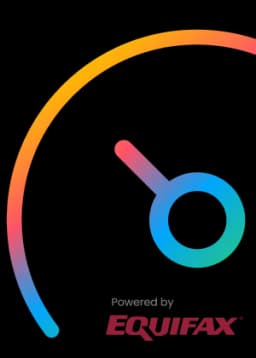Financial stress is real. Nearly 40% of Canadians rank it as their top worry, according to FP Canada's Financial Stress Index. What causes this concern? Often, it's simply not having enough funds for surprise expenses.
Stats Canada found that twenty-five percent of Canadians would struggle to handle an unexpected $2,000 bill without borrowing money. This can be concerning, but here's the good news.
You have tools available to build that financial cushion and also help prepare you for retirement. They're called Registered Retirement Savings Plans (RRSPs) and Tax-Free Savings Accounts (TFSAs). These are effective tools for keeping more money in your pocket and less going to taxes. What’s better is that the government wants you to use them!
This guide to the tax benefits of RRSPs and TFSAs cuts through the jargon, making it easy to understand how each can save you money and reduce your tax burden. More importantly, you'll learn which one makes the most sense for your situation— even if you're just getting started with saving.
Understanding the TFSA — Your Flexible, Tax-Free Savings Powerhouse
A TFSA isn't just a standard bank account. Think of it more like a special savings vehicle.
You can put various financial assets in this vehicle—cash, guaranteed investment certificates (GICs), stocks, mutual funds, ETFs, and more. The magic happens inside: everything your money earns is completely tax-free.
Here's how it works. You fill your TFSA with money you've already paid tax on—your take-home pay. Since you've already paid the required tax, the government lets your investments grow without touching them.
And when you take money out? No tax bill. Whether it's your original contribution or the earnings from your investments, it's all yours to keep.
Your Income Remains Tax Free
There's a significant advantage many people overlook. When you pull money from your TFSA, it doesn't count as income. Why does that matter?
Many government assistance programs look at your income to decide what you can receive. This includes child benefits, GST credits, and even senior support like Old Age Security (OAS) and Guaranteed Income Supplement (GIS) down the road.
Unlike RRSP withdrawals, which can shrink these benefits, withdrawals from your TFSA aren’t reported on your income taxes as income. You can build wealth without accidentally cutting yourself off from support.
Your Financial Safety Net
Life throws curveballs—unexpected car repairs, urgent home maintenance, or unexpected job loss. The ability to access funds when you need them most is essential for managing uncertainties.
The TFSA shines here because you can pull money anytime without tax implications.
One key to remember is how the withdrawal of money and re-contribution work. If you take money out, you don't lose that contribution room forever. It comes back, but not until January 1st of the following year.
For example, if you withdraw $2,000 in July 2024, you won’t be able to put it back until 2025 (unless you have other unused room). Mis-timing this could result in penalties for putting in too much.
This makes TFSAs much more suitable for emergency cash than RRSPs, which tax early withdrawals and never give that contribution space back.
Good News for Late Starters
You haven’t opened a TFSA yet? No problem! Here's the benefit: your contribution room has been piling up since you turned 18 (or since you became a resident of Canada).
Every year, the government adds a new contribution room (it's $7,000 for 2024). Any unused room from previous years just keeps accumulating.
If you're 25 today and have never used a TFSA before, you have a significant amount of room waiting for you. Nothing is lost by starting now.
To find your exact limit, log into your Canada Revenue Agency (CRA) My Account online.
Understanding the RRSP—Your Partner for Retirement Savings & Tax Reduction Now
Let's talk about RRSPs. They're different from TFSAs in key ways. Think of an RRSP as your long-term savings vehicle, specifically designed to help you save for retirement.
The tax mechanism with RRSPs works differently from TFSAs. Here, you get tax advantages upfront.
When you put money in an RRSP, you can subtract that amount from your income at tax time. Your investments then grow inside the RRSP without getting taxed year after year.
The timing difference is that you pay the tax later when you withdraw funds, which most people do in retirement.
The Power of the RRSP Tax Deduction
The upfront tax break, received through tax-deductible contributions, is what makes RRSPs so appealing. By reducing your taxable income, you directly lower your tax bill. Many people receive large tax refunds after making RRSP contributions.
Is your salary modest now, but you expect a big raise soon? You can contribute to your RRSP this year, but save the tax deduction for later when you're earning more and paying more tax. This strategy maximizes the value of your tax break since you would save more tax dollars at a higher income level.
Your RRSP Contribution Limit
Unlike TFSAs, where everyone gets the same amount of room, your RRSP limit depends on your income. The basic rule is 18% of last year's earned income, up to a yearly cap set by the government.
Any unused room from past years rolls forward, giving you extra space to fill when you can. You need to stay within your limit, though.
The CRA allows a tiny $2,000 buffer for mistakes, but go beyond that, and you are looking at a significant penalty of 1% per month on the excess until you take it out. This can become costly.
To avoid this complication, check your Notice of Assessment (the document the CRA sends after processing your taxes) for your exact contribution limit.
RRSP Withdrawal Rules
RRSPs are built for the long haul. When you pull money out, the government counts every dollar as income for that year. This means it gets taxed at your regular rate.
For withdrawals, your financial institution automatically holds back some tax right away — 10% on smaller amounts up to $5,000, 20% on mid-sized withdrawals between $5,001 and $15,000, and 30% on bigger amounts over $15,000 (Quebec has different rates). Be aware, this might not cover your entire tax bill.
You will sort out the final tax liability when you file your tax return.
There are two special cases where you can temporarily borrow from your RRSP without the tax hit: the Home Buyers' Plan for first-time home purchases and the Lifelong Learning Plan for going back to school. Both have specific rules about how much you can take and when you need to pay it back.
Finally, you cannot keep your RRSP forever. By the end of the year, when you turn 71, you will need to close it, typically by converting it to an RRIF (Registered Retirement Income Fund) that pays you taxable income.
RRSP vs. TFSA: A Clear Comparison for Your Goals
Now that we have covered both accounts, let's compare them. We will break it down so you can see which one might be more suitable for your situation.
The Main Differences at a Glance
Feature | Registered Retirement Savings Plan (RRSP) | Tax-Free Savings Account (TFSA) |
Main Tax Benefit | Tax deduction now (lowers current taxable income) | Tax-free growth & tax-free withdrawals later |
Tax on Withdrawals | Yes, taxed as regular income | No, completely tax-free |
Flexibility/Access | Lower (taxed withdrawals, mainly for retirement) | High (easy, tax-free access for any goal) |
Primary Goal | Long-term retirement savings | Any goal (emergencies, short/medium-term, retirement) |
Generating Room | Based on the prior year's earned income | Starts automatically at age 18 (for residents) |
Impact on Benefits | Withdrawals can reduce income-tested government benefits | No impact on income-tested government benefits |
When Do You Pay Tax (Or Skip It Entirely)?
This is the big difference: RRSPs let you defer taxes now but pay later, ideally when your tax rate is lower. TFSAs are for already-taxed money, but they allow your investment gains to grow tax-free.
Inside an RRSP, everything that comes out gets taxed the same way—as regular income. The preferential tax treatment you might get on dividends or capital gains in a regular account does not apply to RRSP withdrawals.
With TFSAs, it does not matter what kind of profits your investments make—interest, dividends, growth—it all comes out tax-free.
Accessing Your Money—Which Makes It Easier?
Access is a huge deal. TFSAs win the clear advantage in flexibility. Need cash for a car repair? House down payment? Dream vacation? It is all there, ready to access without tax issues.
And you get that contribution room back next January.
RRSPs discourage early access. Taking money out means paying tax right away and permanently losing that contribution space; goodbye forever.
Yes, there are those special programs for first-time home buying and education, but beyond those, the RRSP wants you to wait until retirement.
Who Gets to Contribute What?
The rules are different here, too. Your TFSA room starts accumulating from age 18, whether you are working or not. As long as you live in Canada, that contribution space keeps growing year after year.
RRSPs work differently. No income means no new contribution room. You have to earn money to create space—specifically, the government gives you room based on 18% of what you earned the previous year (up to the annual limit).
RRSP or TFSA? Making the Choice
In a perfect world, you would max out your TFSA and RRSP every year. But most Canadians do not have that kind of disposable income. Daily life costs money.
So how do you decide which account best suits your savings right now? Consider these factors based on your situation:
When the TFSA Might Make More Sense
Do you lack an emergency fund yet? TFSA first. Having 3-6 months of basic living expenses tucked away can provide peace of mind.
Is your income currently lower or moderate? If you are in a lower tax bracket, the TFSA's tax-free growth might do more for you down the road.
Do you anticipate needing funds before retirement? The TFSA allows you to take your cash when you need it.
Do you receive government benefits? If you count on things like the Canada Child Benefit or GST credits, remember that TFSA withdrawals do not affect your Canada Child Benefits or GST credits.
Are you new to saving? The TFSA is simpler to understand and use when you are new to saving and investing.
When the RRSP Deserves Your Attention
Do you have a higher income? If you are in a higher tax bracket, the RRSP can help reduce your tax bill.
Do you prefer less access to enforce savings discipline? Knowing you will face tax consequences if you withdraw early helps keep the money put.
Are you planning to buy a home or pursue education soon? If you are planning to use the Home Buyers' Plan or Lifelong Learning Plan soon, building up RRSP funds makes sense.
Taking Control of Your Savings
Personal finance does not have to be so hard to understand. Now that you have reviewed the details on RRSPs and TFSAs, you have some valuable tools available. Both of these accounts do something beneficial—they help your money grow while keeping your tax burden to a minimum.
The TFSA stands out as highly flexible, and your earnings are tax-free forever. Need cash for almost anything? You can pull your money out without having to pay tax. Meanwhile, the RRSP is more like your retirement savings vehicle, cutting your tax bill today while helping you accumulate savings for your later years.
The hardest part is often just getting started. Take that first step by checking your contribution room on the CRA's My Account website. You have the tools—now you have the know-how to utilize them.
Frequently Asked Questions (FAQs)
Should I have both an RRSP and a TFSA?
Yes, it is usually beneficial if you can afford it. Think of them as different tools in your financial toolkit. Each one does something the other cannot.
Using both lets you utilize different tax strategies, depending on what you need at different points in your life.
Will my TFSA reduce my taxable income?
No. Unlike RRSPs, putting funds in your TFSA will not reduce your tax bill today. You are using money you have already paid tax on. You do not even have to mention TFSA withdrawals on your tax return.
How much can an RRSP reduce my taxes?
It depends on your tax bracket. The higher your income, the bigger the tax break.
When you put money in your RRSP and claim the deduction, that amount comes right off your taxable income. Your tax savings roughly equal your contribution multiplied by your tax rate.
What is the downside of a TFSA?
Compared to RRSPs, the main drawback is that there is no instant tax break when you contribute. You are using after-tax dollars from the start.
You also need to keep an eye on your contribution limit. Exceed it, and the CRA will impose penalties—1% per month on the extra amount.











